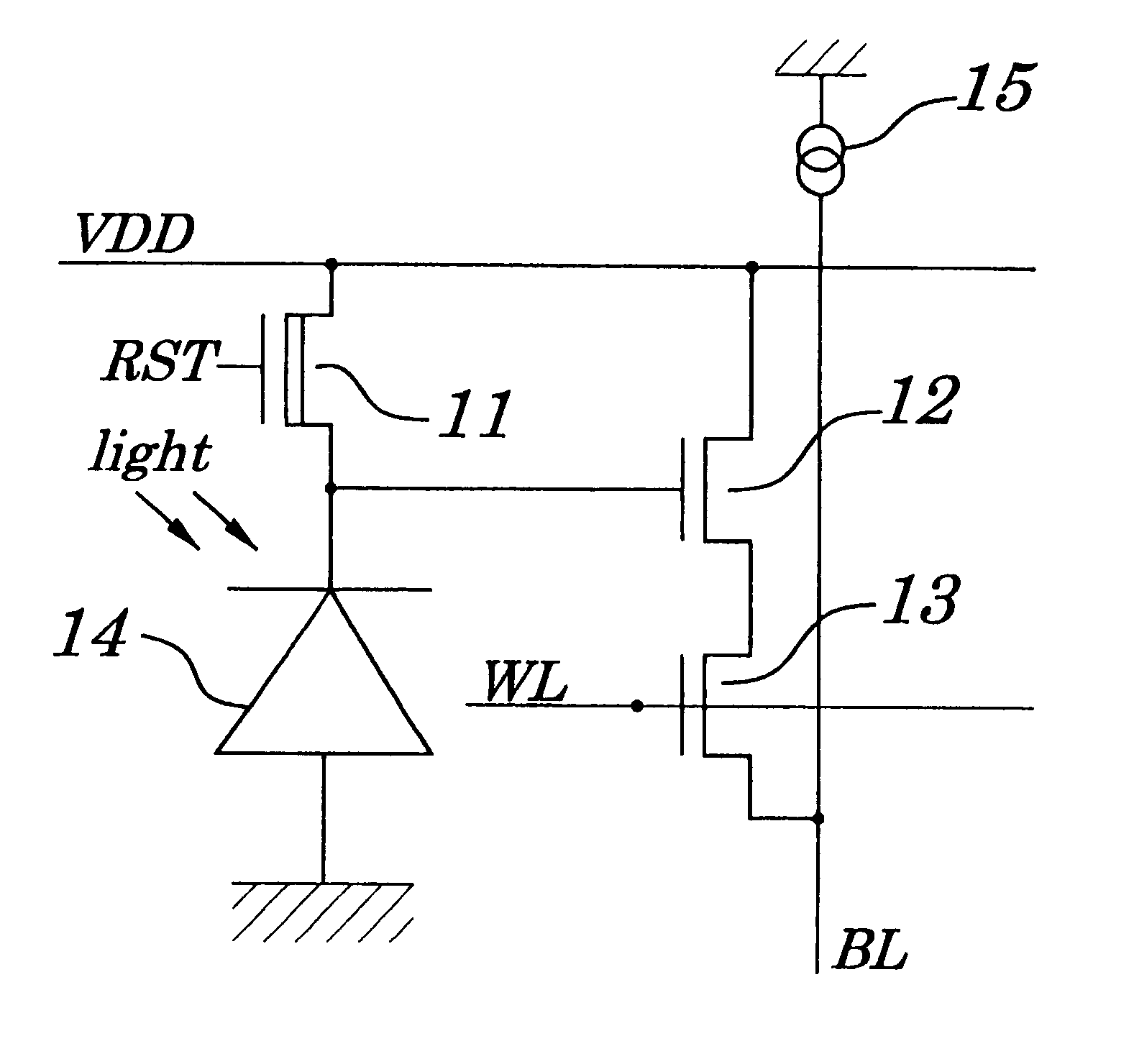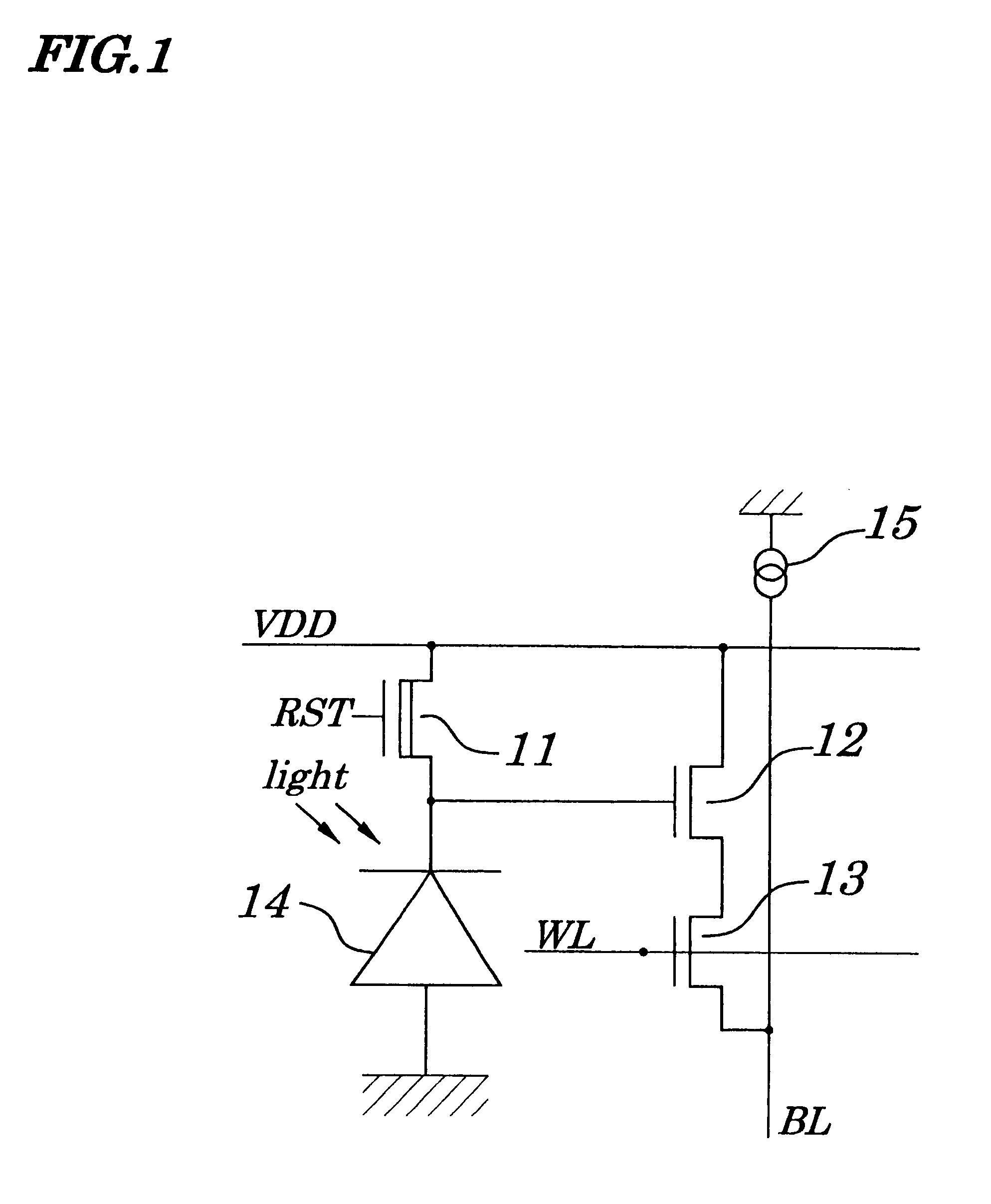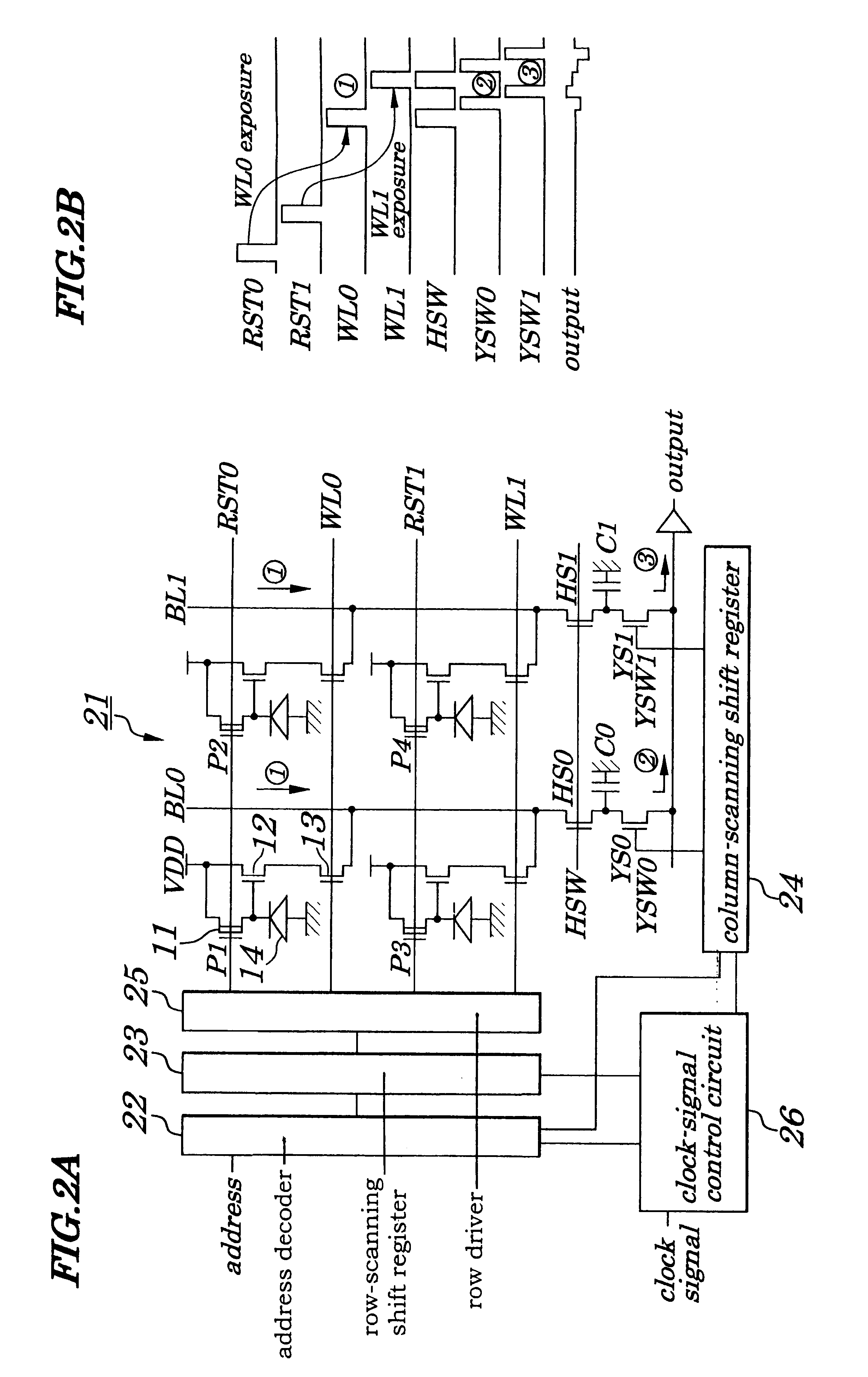Image sensor
a technology of image sensor and metal oxide semiconductor, which is applied in the field of metal oxide semiconductor image sensor, can solve the problems of shrinking the dynamic range of output signal
- Summary
- Abstract
- Description
- Claims
- Application Information
AI Technical Summary
Problems solved by technology
Method used
Image
Examples
second embodiment
FIG. 3 shows a configuration of a unitary pixel circuit in an image sensor according to a second embodiment of the present invention, in which the circuit is made of n-channel transistors.
The pixel circuit shown in this example roughly comprises a resetting transistor 11A, an amplifying transistor 12A, a bit-line output transistor 13, a photo-diode 14, and a current source 15.
In this configuration, the transistors 12A and 13 are of an enhancement type, of which the transistor 12A is supposed to be of a high-breakdown voltage type. The transistor 11A is a depletion-type one having a high-breakdown voltage.
When the Reset signal RST went high, the transistor 11A supplies a step-up supply voltage VBOOT to the photo-diode 14, thereby resetting it to the photo-electric conversion initiation state. The transistor 12A forms a source follower together with a current source 15, thus amplifying a photo-electric conversion voltage of the photo-diode 14. When a word-line readout control signal W...
third embodiment
FIG. 4 shows a configuration of a unitary pixel circuit in an image sensor according to a third embodiment of the present invention, in which that circuit is made of n-channel transistors.
This exemplary pixel circuit roughly comprises a resetting transistor 11, an amplifying transistor 12, a bit-line output transistor 13, a photo-diode 14, a current source 15, and a transfer gate transistor 16. In this configuration, the transistors 12 and 13 are of an enhancement type, while the transistor 11 and 16 are of a depletion type.
In this example, the transistors 11, 12, and 13 as well as the photo-diode 14 and the current source 15 are the same as those of the first embodiment shown in FIG. 1, with a large difference that the transistor 16 constituting the transfer gate is provided in series with the photo-diode 14. Although the transistor 16 usually disconnects the photo-diode 14 from an interconnection between a source of the transistor 11 and a gate of the transistor 12, when a gate si...
fourth embodiment
FIG. 6 shows a configuration of a unitary pixel circuit in an image sensor according to a fourth embodiment of the present invention, in which the circuit is made of n-channel transistors.
The pixel circuit in this example roughly comprises a resetting transistor 11A, an amplifying transistor 12A, a bit-line output transistor 13, a photo-diode 14, a current source 15, and a transfer gate transistor 16A. Of these, the transistors 12A and 13 are of an enhancement type, while the transistor 12A is of a high-breakdown voltage type. The transistors 11A and 16A are depletion-type transistors having a high breakdown voltage.
When the Reset signal RST went high, the transistor 11A supplies a step-up supply voltage VBOOT to the photo-diode 14, to reset it to a photo-electric conversion initiation state. The transistor 12A forms a source follower together with the current source 15, to amplify a photo-electric conversion voltage of the photo-diode 14. When a word-line readout control signal WL ...
PUM
 Login to View More
Login to View More Abstract
Description
Claims
Application Information
 Login to View More
Login to View More - Generate Ideas
- Intellectual Property
- Life Sciences
- Materials
- Tech Scout
- Unparalleled Data Quality
- Higher Quality Content
- 60% Fewer Hallucinations
Browse by: Latest US Patents, China's latest patents, Technical Efficacy Thesaurus, Application Domain, Technology Topic, Popular Technical Reports.
© 2025 PatSnap. All rights reserved.Legal|Privacy policy|Modern Slavery Act Transparency Statement|Sitemap|About US| Contact US: help@patsnap.com



